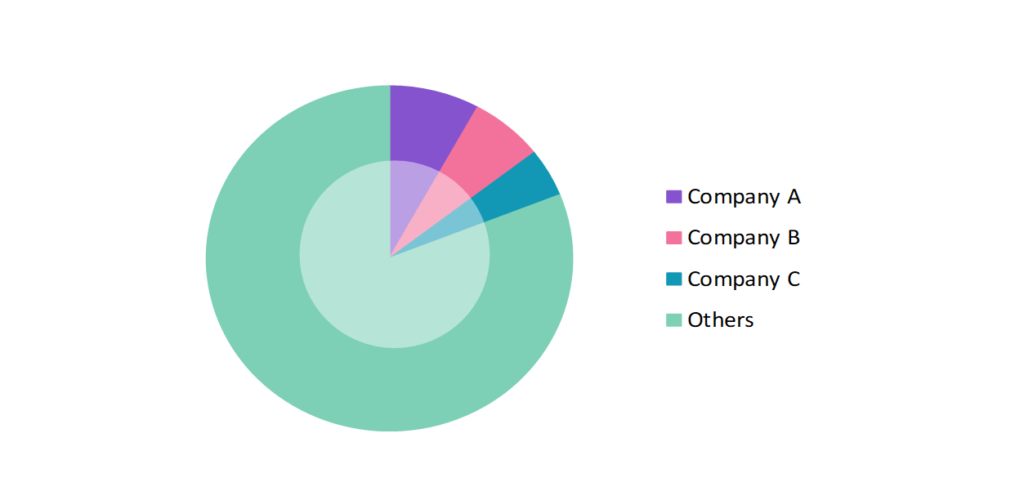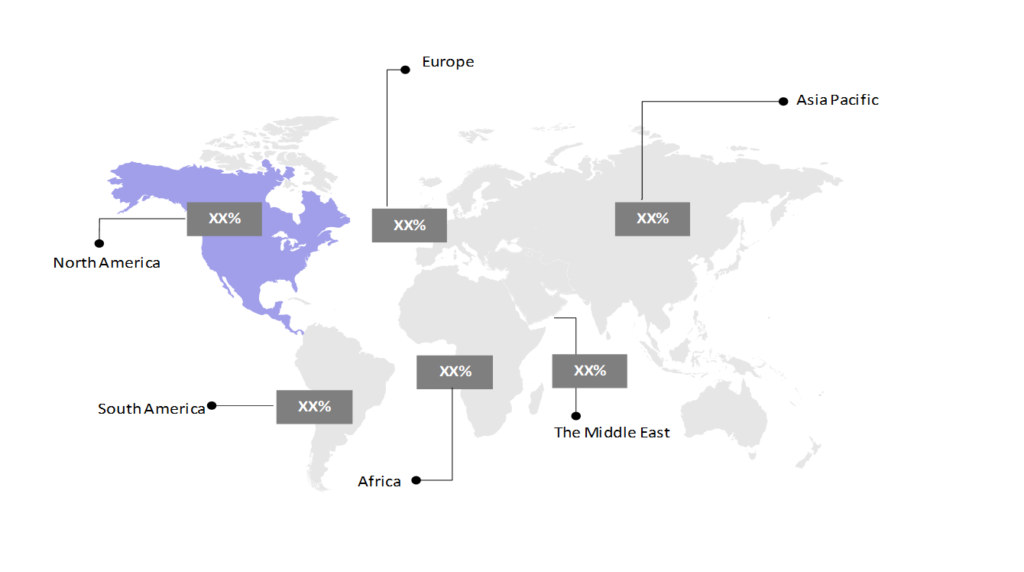IoT Device Market: Size, Share, Trends & Forecast (2024-2029)
The market report presents a thorough analysis segmented by Connectivity Technology (Wi-Fi, Bluetooth, Cellular, Near- field Communication (NFC), Radio Frequency Identification (RFID), Others); by Component (Processor, Connectivity IC, Sensors, Others); by End-use (Consumer Electronics, Retail, Logistics, Automotive, Healthcare, Manufacturing, Others); by Geography (North America, South America, Asia Pacific, Europe, the Middle East, Africa).
Outlook

- The IoT device market is estimated to be at USD 157.47 Bn in 2024 and is anticipated to reach USD 339.43 Bn in 2029.
- The IoT device market is registering a CAGR of 16.6% during the forecast period of 2024-2029.
- The Internet of Things (IoT) device market is experiencing rapid growth, driven by advancements in technology and the increasing demand for smart and connected devices across various industries. The market is expected to see sustained growth due to the proliferation of 5G networks, the expansion of cloud computing, and the integration of artificial intelligence (AI) with IoT systems.
Request a free sample.
Ecosystem

- The participants in the global IoT device industry are always developing their strategies to preserve a competitive advantage.
- These companies are investing heavily in research and development to innovate and stay ahead in the market. Strategic partnerships, mergers and acquisitions, and new product launches are common strategies employed by these players to expand their market presence.
- Several important entities in the IoT device market include Texas Instruments Inc.; Microsoft Corp.; Cypress Semiconductor Corp.; Cisco Systems, Inc.; Intel Corp.; and others.
Ask for customization.
Findings
| Attributes | Values |
|---|---|
| Historical Period | 2018-2022 |
| Base Year | 2023 |
| Forecast Period | 2024-2029 |
| Market Size (2024) | USD 157.47 Bn |
| Market Size (2029) | USD 339.43 Bn |
| Growth Rate | 16.6% CAGR from 2024 to 2029 |
| Key Segments | Connectivity Technology (Wi-Fi, Bluetooth, Cellular, Near- field Communication (NFC), Radio Frequency Identification (RFID), Others); Component (Processor, Connectivity IC, Sensors, Others); End-use (Consumer Electronics, Retail, Logistics, Automotive, Healthcare, Manufacturing, Others); Geography (North America, South America, Asia Pacific, Europe, the Middle East, Africa) |
| Key Vendors | Texas Instruments Inc.; Microsoft Corp.; Cypress Semiconductor Corp.; Cisco Systems, Inc.; Intel Corp. |
| Key Countries | The US; Canada; Mexico; Brazil; Argentina; Colombia; Chile; China; India; Japan; South Korea; The UK; Germany; Italy; France; Spain; Turkey; UAE; Saudi Arabia; Egypt; South Africa |
| Largest Market | North America |
Get a free quote.
Trends
- Edge Computing Integration: Edge computing is becoming increasingly integrated with IoT devices, enabling data processing closer to the source of data generation. This reduces latency, enhances real-time decision-making, and minimizes the need for bandwidth. NVIDIA and Siemens have partnered to develop edge computing solutions for industrial IoT that will allow factories to process data locally, thus improving response times and operational efficiency.
- AI-Enhanced IoT Devices: The integration of artificial intelligence (AI) with IoT devices is creating smarter and more autonomous systems. AI algorithms are being used to analyze data collected by IoT sensors, leading to predictive maintenance, anomaly detection, and personalized user experiences. Google’s Nest smart home products use AI to learn user preferences and optimize home environments automatically, improving energy efficiency and comfort.
- Proliferation of IoT-Powered Digital Twins: The use of digital twins, virtual replicas of physical objects, will become more prevalent within the metaverse. IoT will empower users to interact with and manipulate these virtual representations in real-time, revolutionizing simulations, training, and virtual commerce. This trend will enhance the realism and interactivity of the metaverse, making it a more immersive and functional space.
Speak to analyst.
Catalysts
- Expansion of 5G Networks: The deployment of 5G technology is a significant growth driver for the IoT device market. 5G’s enhanced connectivity, with faster data transfer rates and reduced latency, is enabling more reliable and widespread use of IoT devices in various applications, from smart cities to autonomous vehicles.
- Increased Adoption of Smart Home Devices: Consumers are increasingly adopting smart home devices such as smart thermostats, security systems, and voice-controlled assistants. The convenience and energy efficiency offered by these devices are driving their popularity, contributing to the overall growth of the IoT device market.
- Industrial IoT (IIoT) Growth: In the industrial sector, IoT devices are being used to monitor equipment, optimize production processes, and enhance safety. The adoption of IIoT in manufacturing, healthcare, and logistics is driving market growth as businesses seek to improve efficiency and reduce costs through automation and real-time data analytics.
Inquire before buying.
Restraints
- Data Security and Privacy Concerns: With the increasing number of connected devices, data security and privacy have become major concerns. The potential for cyberattacks on IoT networks can deter adoption, especially in industries that handle sensitive information, such as healthcare and finance.
- High Implementation Costs: The initial cost of implementing IoT systems, including the purchase of devices, infrastructure, and software, can be prohibitively high for small and medium-sized enterprises (SMEs). This can limit market penetration, especially in developing regions.
- Lack of Standardization and Communication Protocols: The IoT market is fragmented, with numerous devices operating on different platforms and using varied communication protocols. This lack of standardization can lead to compatibility issues, making it challenging for devices to communicate seamlessly with each other. It also complicates integration efforts for businesses looking to create unified IoT ecosystems.
Personalize this research.
Hotspot

Explore purchase options.
Table of Contents
| 1. Introduction 1.1. Research Methodology 1.2. Scope of the Study 2. Market Overview / Executive Summary 2.1. Global IoT Device Market (2018 – 2022) 2.2. Global IoT Device Market (2023 – 2029) 3. Market Segmentation 3.1. Global IoT Device Market by Connectivity Technology 3.1.1. Wi-Fi 3.1.2. Bluetooth 3.1.3. Cellular 3.1.4. Near- field Communication (NFC) 3.1.5. Radio Frequency Identification (RFID) 3.1.6. Others 3.2. Global IoT Device Market by Component 3.2.1. Processor 3.2.2. Connectivity IC 3.2.3. Sensors 3.2.4. Others 3.3. Global IoT Device Market by End use 3.3.1. Consumer Electronics 3.3.2. Retail 3.3.3. Logistics 3.3.4. Automotive 3.3.5. Healthcare 3.3.6. Manufacturing 3.3.7. Others 4. Regional Segmentation 4.1. North America 4.1.1. The US 4.1.2. Canada 4.1.3. Mexico 4.2. South America 4.2.1. Brazil 4.2.2. Argentina 4.2.3. Colombia 4.2.4. Chile 4.2.5. Rest of South America 4.3. Asia Pacific 4.3.1. China 4.3.2. India 4.3.3. Japan 4.3.4. South Korea 4.3.5. Rest of Asia Pacific 4.4. Europe 4.4.1. The UK 4.4.2. Germany 4.4.3. Italy 4.4.4. France 4.4.5. Spain 4.4.6. Rest of Europe 4.5. The Middle East 4.5.1. Turkey 4.5.2. UAE 4.5.3. Saudi Arabia 4.5.4. Rest of the Middle East 4.6. Africa 4.6.1. Egypt 4.6.2. South Africa 4.6.3. Rest of Africa 5. Value Chain Analysis of the Global IoT Device Market 6. Porter Five Forces Analysis 6.1. Threats of New Entrants 6.2. Threats of Substitutes 6.3. Bargaining Power of Buyers 6.4. Bargaining Power of Suppliers 6.5. Competition in the Industry 7. Trends, Drivers and Challenges Analysis 7.1. Market Trends 7.1.1. Market Trend 1 7.1.2. Market Trend 2 7.1.3. Market Trend 3 7.2. Market Drivers 7.2.1. Market Driver 1 7.2.2. Market Driver 2 7.2.3. Market Driver 3 7.3. Market Challenges 7.3.1. Market Challenge 1 7.3.2. Market Challenge 2 7.3.3. Market Challenge 3 8. Opportunities Analysis 8.1. Market Opportunity 1 8.2. Market Opportunity 2 8.3. Market Opportunity 3 9. Competitive Landscape 9.1. Texas Instruments Inc. 9.2. Microsoft Corp. 9.3. Cypress Semiconductor Corp. 9.4. Cisco Systems, Inc. 9.5. Intel Corp. 9.6. Company 6 9.7. Company 7 9.8. Company 8 9.9. Company 9 9.10. Company 10 |
Know the research methodology.
IoT Device Market – FAQs
1. What is the current size of the IoT device market?
Ans. In 2024, the IoT device market size is USD 157.47 Bn.
2. Who are the major vendors in the IoT device market?
Ans. The major vendors in the IoT device market are Texas Instruments Inc.; Microsoft Corp.; Cypress Semiconductor Corp.; Cisco Systems, Inc.; Intel Corp.
3. Which segments are covered under the IoT device market segments analysis?
Ans. The IoT device market report offers in-depth insights into Connectivity Technology, components, End-use, and Geography.
